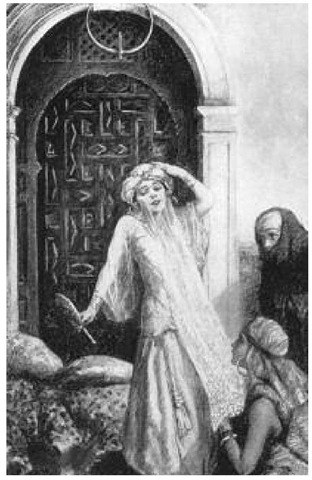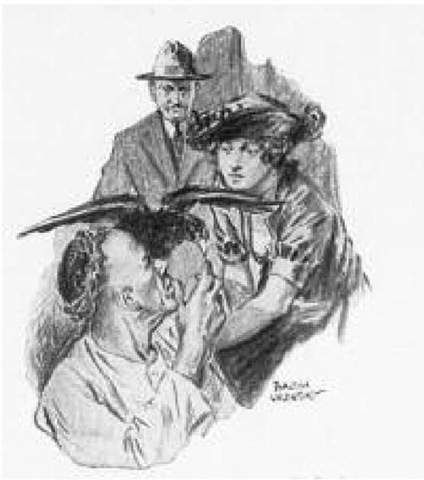(1883-1959)
The name of Sax Rohmer is synonymous with pulp fiction of the 20th century. The creator of the immortal Dr. Fu-Manchu and numerous other weird and memorable characters, Rohmer was a popular and prolific author of dozens of exotic thrillers and mysteries. Though his output varied wildly in quality, the lurid turn of his mind and the feverish settings of his stories—whether a fetid, sunlit bazaar in Cairo or a creepy English manor house at midnight—were always instantly identifiable.
Even as a child, Arthur Henry Ward, of Birmingham, England, had no ambition but to write for a living. He ventured to London as a young man and began peddling journalistic pieces and prose sketches to the thriving newspaper and magazine markets. From the start of his professional career he showed an obsessive interest in the strange and foreign, particularly matters of the occult and of ancient and modern Egypt. His first short-story sale, to Pearson’s Magazine in 1903, was titled “The Mysterious Mummy,” set (like so many of his tales would be through the years to come) in and around the archaeological and Egyptological wings of the British Museum. An early, popular series character of Rohmer’s creation was Morris Klaw, the so-called dream detective. Resident of a cluttered antique store, Klaw was a kind of psychic Sherlock Holmes who solved his cases through the interpretation of his own dreams and visions.
As legend has it, Rohmer conceived of his most famous character while researching a newspaper story in London’s Chinatown district. Tales of a much-feared Chinese gang leader sparked an idea for a story that would first appear in a British fiction magazine in October 1912. “The Zayat Kiss” began the saga of the brilliant supervillain Fu-Manchu, a malevolent, emerald-eyed mandarin intent on world domination. Xenophobic, so-called yellow menace or yellow peril stories—in which an Asian country attacks or tries to overpower the West—had been popular since the turn of the 20th century. Rohmer personalized such paranoid fears with his towering, fiendish doctor, the embodiment of a mysterious, invincible foreign enemy. In short stories, and then in a series of novels in the 1930s, and intermittently until the author’s death, Rohmer tracked Fu-Manchu’s evil deeds around the world. His nemesis was the noble crime-fighter Sir Denis Nayland Smith and his sidekick Dr. Petrie (resemblances to Sherlock Holmes and Dr. Watson likely not unintentional). But while Smith was the nominal hero of the series, the figure of fascination was, always, the diabolical doctor, with his shaved head, his ingenious disguises, and his pampered marmoset, and his never-ending schemes to make the world succumb to his desires.
Prolific to a fault, Rohmer developed many other series characters, including such determined detective heroes as Paul Harley, whose cases in- cluded Fire-Tongue (1921) and Bat-Wing, (1921) and Chief Inspector Red Kerry, protagonist of the 1919 novel Dope and several others. Rohmer was a frequent contributor to story magazines in Britain and the American pulps, and these were routinely gathered in collections, usually belonging to Rohmer’s recurring settings of Chinatown or Egypt. Beginning in 1950, Rohmer did a kind of gender switch on Fu-Manchu to create a female supervillain, Sumuru. She would be featured in five published volumes, though most fans considered her a shadow of the fascinating original, and in the end Rohmer would abandon her for a final return to Fu-Manchu. Emperor Fu Manchu would be Rohmer’s final work of fiction, published in the year of his death, 1959.
Illustration from a scene in Sax Rohmer’s Tales of a Secret Egypt (1919): “She stood there . . . her slim body swaying in a perfect rapture of admiration for her own beauty.”
Works
- Bat Flies Low, The (1935);
- Bat Wing (1921);
- Bimbashi Baruk of Egypt (1944) (variant edition published in the United Kingdom as Egyptian Nights);
- Book of Fu-Manchu, The (1929);
- Brood of the Witch Queen (1918);
- Daughter of Fu Manchu (1931);
- Day the World Ended, The (1930);
- Dope (1919); Dream Detective, The (1920);
- Drums of Fu Manchu, The (1939);
- Emperor Fu Manchu (1959);
- Emperor of America, The (1929);
- Exploits of Captain O’Hagan, The (1916);
- Fire Goddess, The (also published as Virgin in Flames) (1952);
- Fire-Tongue (1921);
- Fu Manchu’s Bride (1933);
- Golden Scorpion, The (1919);
- Green Eyes of Bast, The (1920);
- Grey Face (1924);
- Hand of Fu-Manchu, The (1917);
- Hangover House (1949);
- Haunting of Low Fennel, The (1920);
- Island of Fu Manchu, The (1941);
- Mask of Fu Manchu, The (1932);
- Moon of Madness (1927);
- Mystery of Dr. Fu-Manchu, The (1913), also published as The Insidious Dr. Fu-Manchu;
- Nude in Mink (also published as Sins of Sumuru) (1950);
- Orchard of Tears, The (1918);
- President Fu Manchu (1936);
- Quest of the Sacred Slipper, The (1919);
- Re Enter Fu Manchu (1957);
- Return of Fu-Manchu, The (1916);
- Romance of Sorcery, The (1914);
- Salute to Bazarada and Other Stories (1939);
- Secret of Holm Peel and Other Strange Stories (1970);
- Seven Sins (1943);
- Shadow of Fu Manchu (1948);
- She Who Sleeps (1928);
- Sinister Madonna (1956);
- Sins of Severac Bablon, The (1914);
- Sumuru (1951);
- Tales of Chinatown (1922);
- Tales of East and West (1932);
- Tales of Secret Egypt (1918);
- Trail of Fu Manchu, The (1934);
- White Velvet (1936);
- Wrath of Fu Manchu and Other Stories (1973);
- Wulfheim as by Michael Furey (1950);
- Yellow Claw, The (1915);
- Yellow Shadows (1925);
- Yu’An Hee See Laughs (1932)
Illustration from a scene in Dope (1919): ” ‘Are you ready for us, Sin?’ asked Sir Lucien.”


